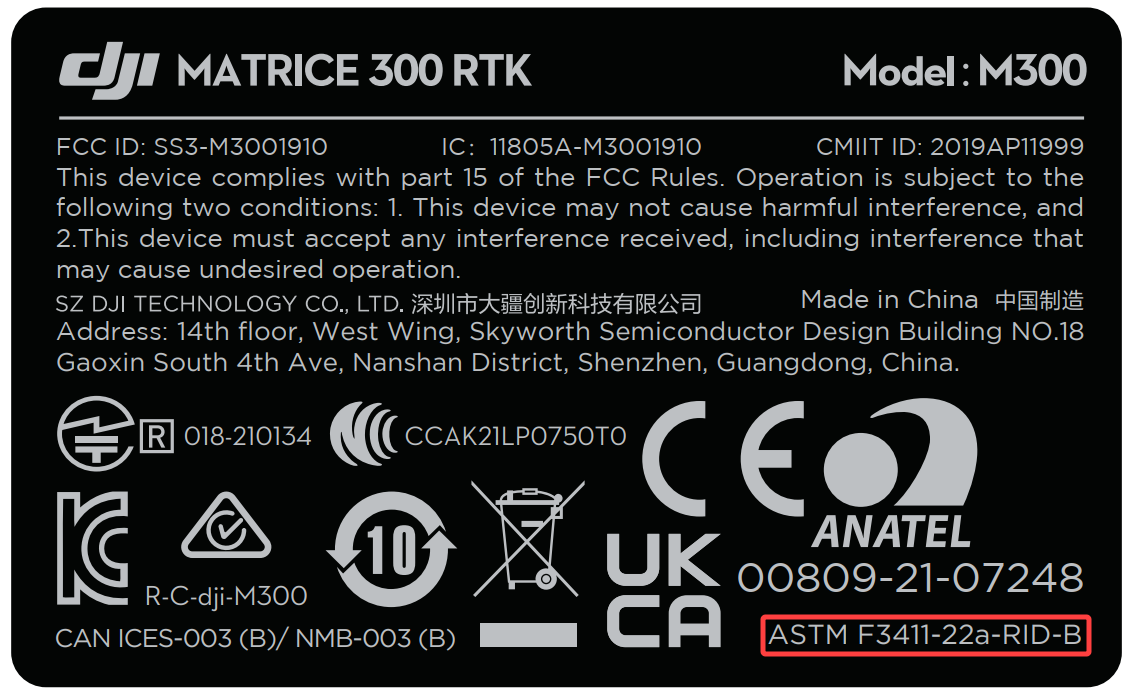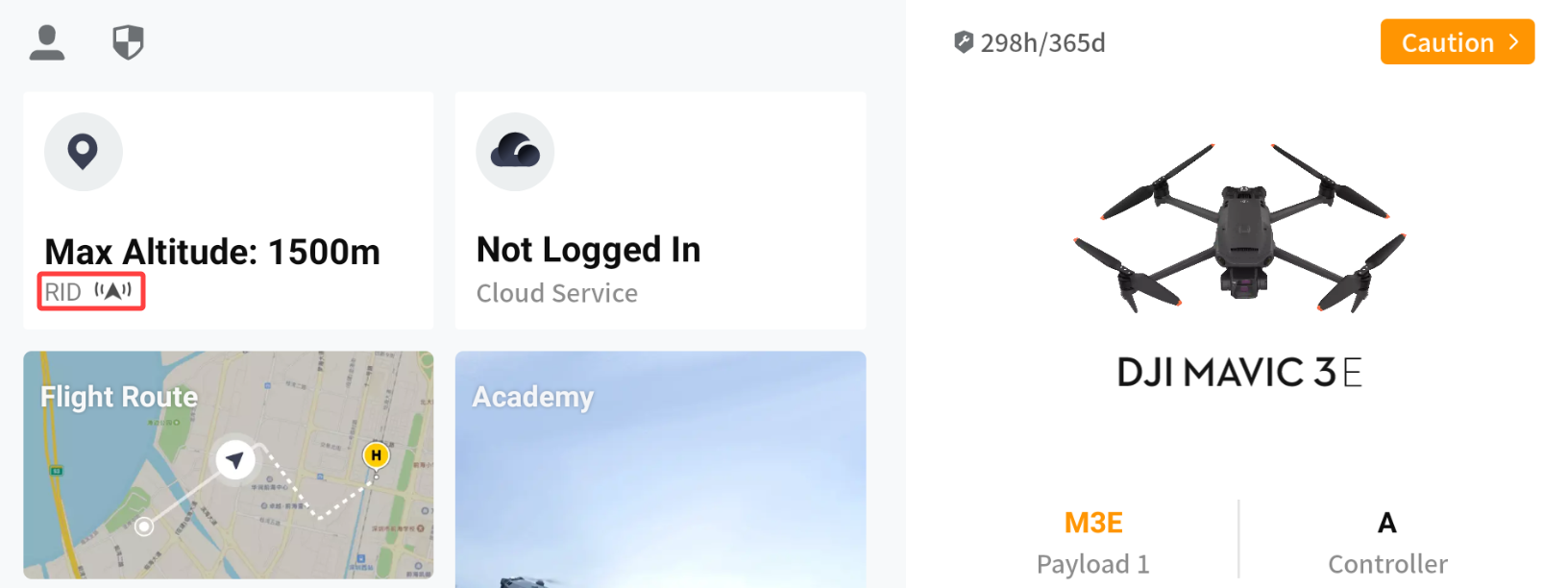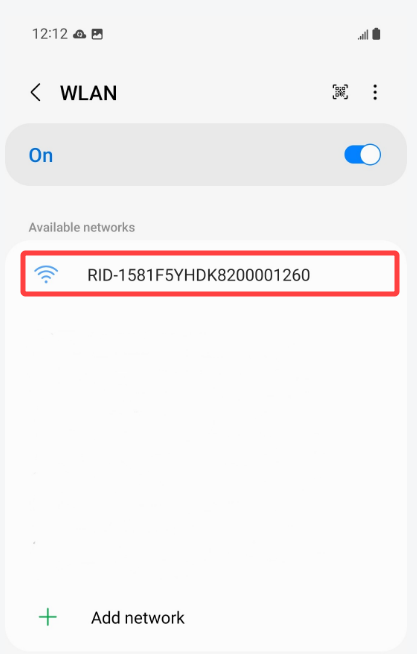We’re already into April and less than half a year from the September 16 compliance date for drone operators to meet the FAA’s Remote ID rules. There are a lot of questions about the upcoming rollout of Remote ID, so we’ve prepared some answers, specifically in relation to DJI’s Enterprise line of drones.
What is Remote ID?
To start, for those who are unfamiliar: Remote ID (RID) is a system that enables a drone to provide identification and location information that can be received by other parties. The system can be compared to an electronic license plate for drones that sends license plate information via radio signals to ground-based receivers.
Since 2016, the U.S. government has prioritized the development of Remote ID to limit the areas where drones fly without a way to identify their pilots. The Federal Aviation Administration (FAA) has collaborated with various stakeholders across the drone world to find potential solutions to this scenario. In late 2019, the FAA proposed initial rules, which were later revised in response to over 53,000 comments from interested parties, including drone pilots, law enforcement organizations, and drone industry groups. The final rules for RID reflect substantial input from these stakeholders.
How does Remote ID work? What information is collected and transmitted?
All drones weighing more than 0.55 pounds must transmit a signal containing their serial number, position, and altitude. The drone's serial number will be connected to the owner's registration data in the FAA's database. Therefore, the Remote ID function will not broadcast any personal information. Instead, authorized officials will be able to access the owner's information by using the serial number, similar to the process of checking vehicle registration information using a license plate number.
To transmit this information, the new rules specify the use of a radio protocol that can be picked up by handheld receivers such as smartphones or tablets. The latest DJI drones, through a firmware update, will be capable of transmitting the required information. For older drones and homemade models without this feature, an add-on module can be utilized to send Remote ID information.
![]()
Which Enterprise drones will comply with Remote ID?
In the future, all new DJI Enterprise drones will be built to be Remote ID compliant.
If your DJI Enterprise drone was introduced to the market after September 2022, it is already designed to comply with Remote ID. This includes the Mavic 3 Enterprise Series, Mavic 3E, Mavic 3T, and Mavic 3M.
For our other current flagship models, the Matrice 300 RTK and the Matrice 30 Series, we have already rolled out a firmware update that makes these two platforms compliant with Remote ID standards. If you bought the drone recently and it was made after September 2022, it may already be RID-compliant. Read in the next section to learn how to check if it’s already RID-compliant or not.
For last-generation drones, the P4 RTK and the Mavic 2 Enterprise Advanced, we will also release a firmware version to make them Remote ID compliant which is currently under development and planned to be released before the September deadline.
Legacy drones, namely the Mavic 2 Enterprise Dual, Mavic 2 Enterprise Zoom, the Matrice 200 Series, can be made RID-compatible through a Remote ID broadcast module that can transmit the required radio signals. While DJI is not selling a RID broadcast module, there are numerous 3rd party options available.
Here’s a visual breakdown of the Remote ID compliance of our Enterprise drones:
| Drone |
Remote ID Broadcast Module Needed? |
RID Tracking Number |
|
Mavic 3E |
No |
|
|
Mavic 3T |
No |
|
|
Mavic 3M |
No |
|
|
Matrice 30 |
No |
|
|
Matrice 30T |
No |
|
|
Matrice 300 RTK |
No |
|
|
Mavic 2 Enterprise Advanced |
No |
TBD |
|
P4 RTK |
No |
TBD |
|
Mavic 2 Enterprise Zoom |
Yes |
|
|
Mavic 2 Enterprise Dual |
Yes |
|
|
Matrice 200 Series |
Yes |
|
|
Matrice 600 Pro |
Yes |
|
What can I do to be ready?
Before the September 16 start date, there are a few steps you can take to ensure you’re ready for Remote ID.
1. Upgrade your drone’s firmware to a RID-compliant version or purchase a RID broadcast module
For the Matrice 30 Series, firmware versions v05.01.00.00 and newer are RID compliant.
For the Matrice 300 RTK, firmware versions v05.01.01.00 onwards are RID compliant.
2. Add drone RID information on the FAA Drone Registration System
For your drone to be RID-compliant, its Certificate of Aircraft Registration must include the Remote ID serial number of the drone. To do this, you must provide the following information to the Registry:
- Drone manufacturer and model name
- Remote ID serial number
This information can be provided through the FAA’s DroneZone portal. For step-by-step instructions on how to find your drone’s serial number and how to add it to the FAA’s Registry, you can follow this guide.
3. Affix a RID compliance label to your drone
Starting in September 2022, DJI has produced drones that meet the requirements for Remote ID, including affixing RID-compliant labels to the drone before leaving the factory. Check your drone for the RID-compliance identifier “ASTM F3411-22a-RID-B” on the compliance label.

For earlier drones upgraded with RID-compliant firmware, you can contact DJI Support for how to label your drone.
How do I know if my drone’s Remote ID functionality is working properly?
There are multiple ways to check if Remote ID is working properly.
1. Remote ID status display on the DJI flight control app
DJI drones automatically initiate a pre-flight self-test (PFST) of the Remote ID system before takeoff, and cannot take off if they don't pass the PFST. The results of the PFST of the Remote ID system, i.e. the working status, can be viewed in the DJI flight control app.
In DJI Pilot 2, if Remote ID is working properly, the RID icon in the upper left corner of the DJI Pilot 2 homepage will be displayed in black, and DJI Pilot 2 will display “Normal” on the Camera View, as shown in the Figure below.
DJI Pilot 2 homepage

Camera View

If Remote ID is working abnormally, the RID icon in the upper left corner of the DJI Pilot 2 homepage will be displayed in red, and DJI Pilot 2 will display “Remote ID module error” on the Camera View, as shown in the Figure below.
DJI Pilot 2 homepage

Camera View

2. Check WLAN to see if RID is broadcasting
Alternatively, you can check local WLAN networks to see if your Remote ID serial number is being broadcasted. Use the DJI remote controller to start the drone’s motors and then check WLAN networks.

If you can see a string prefixed with “RID-” followed by a 20-digit alphanumeric Remote ID serial number in the "Available networks", it means that the Remote ID is broadcast properly.
Where can I learn more?
If you want to learn more about Remote ID and DJI’s plans, you can refer to the FAA Remote ID Compliance Use Guide-FAQ on the DJI Forum.
The upcoming rollout of Remote ID rules by the FAA is just months away, and there are still many questions surrounding this new system. If you haven’t subscribed to our newsletter, feel free to complete the form below so you won’t miss out on any updates.


.png?width=300&name=L3kv%20(1).png)

.png?width=300&name=FH2%20update%20(1).png)
-1.png?width=300&name=HS%20-%20Featured%20Images%20(3)-1.png)